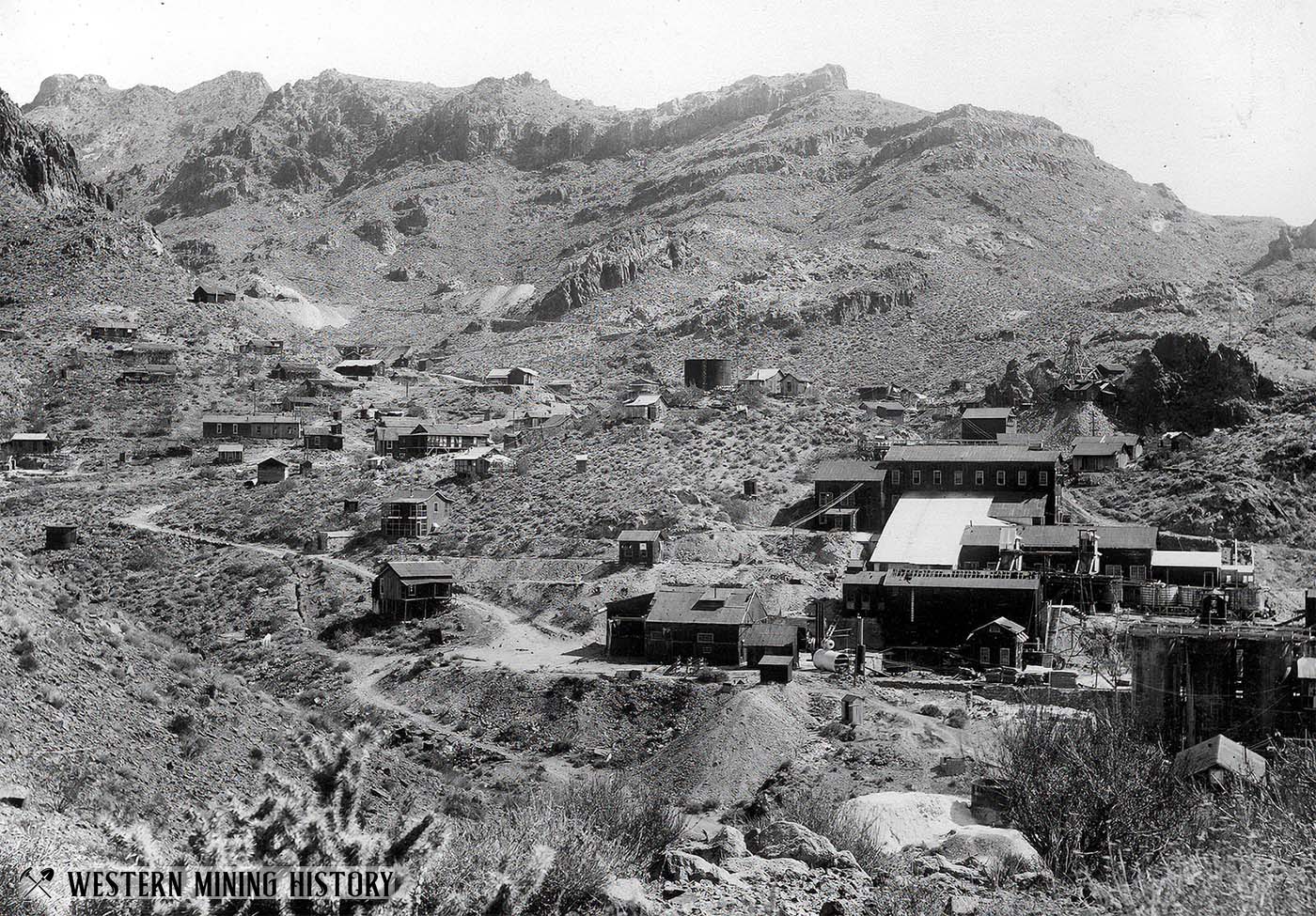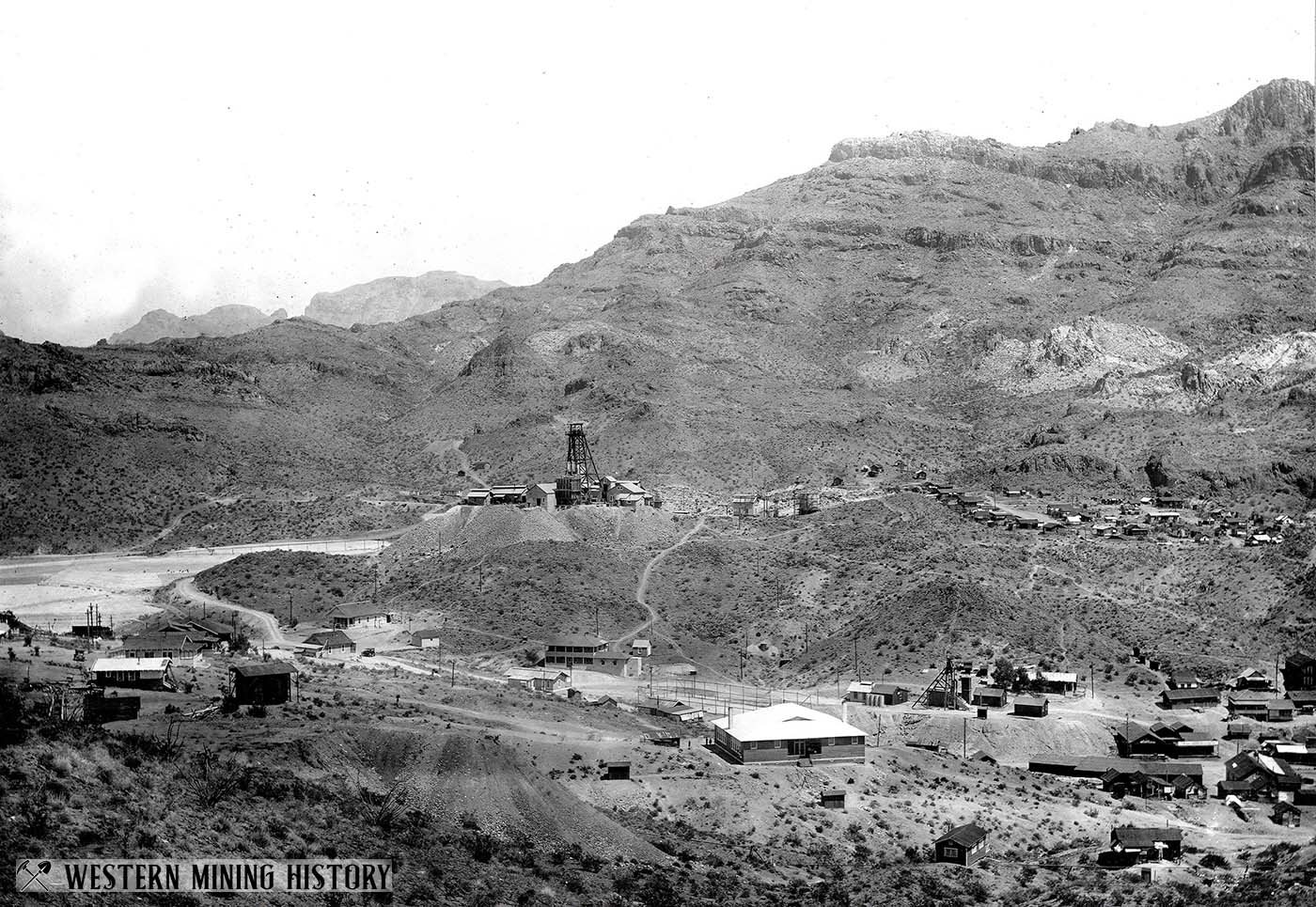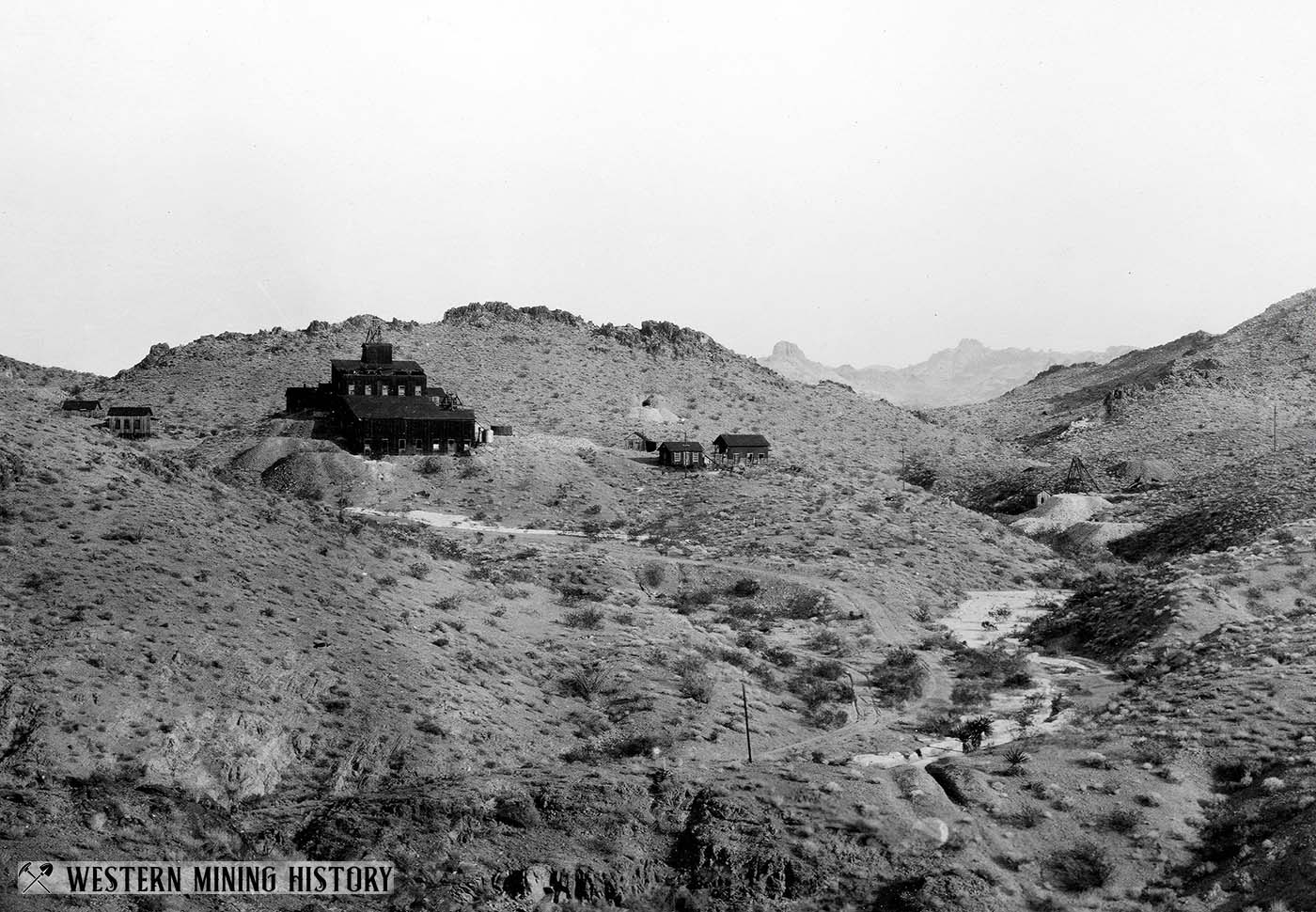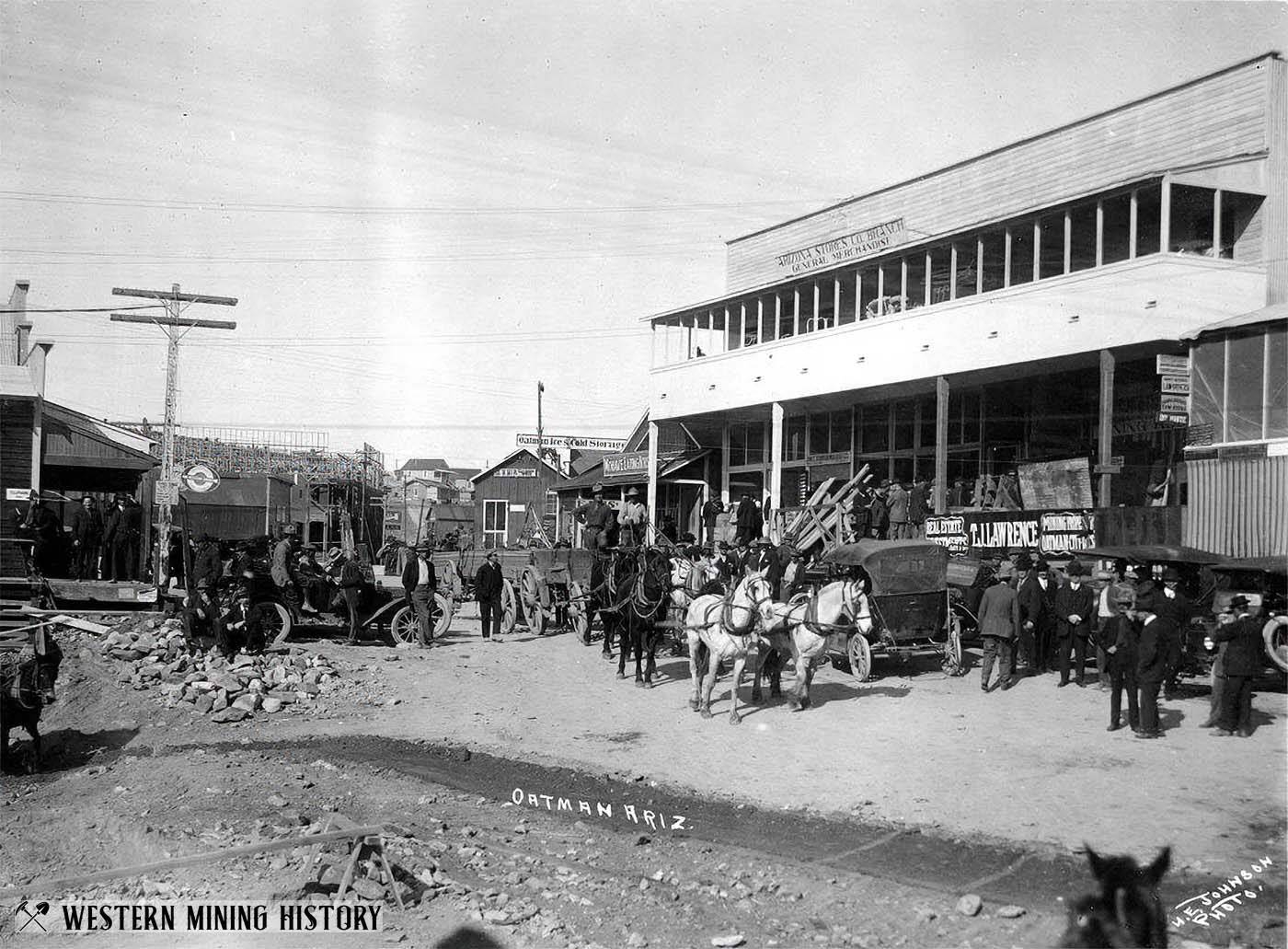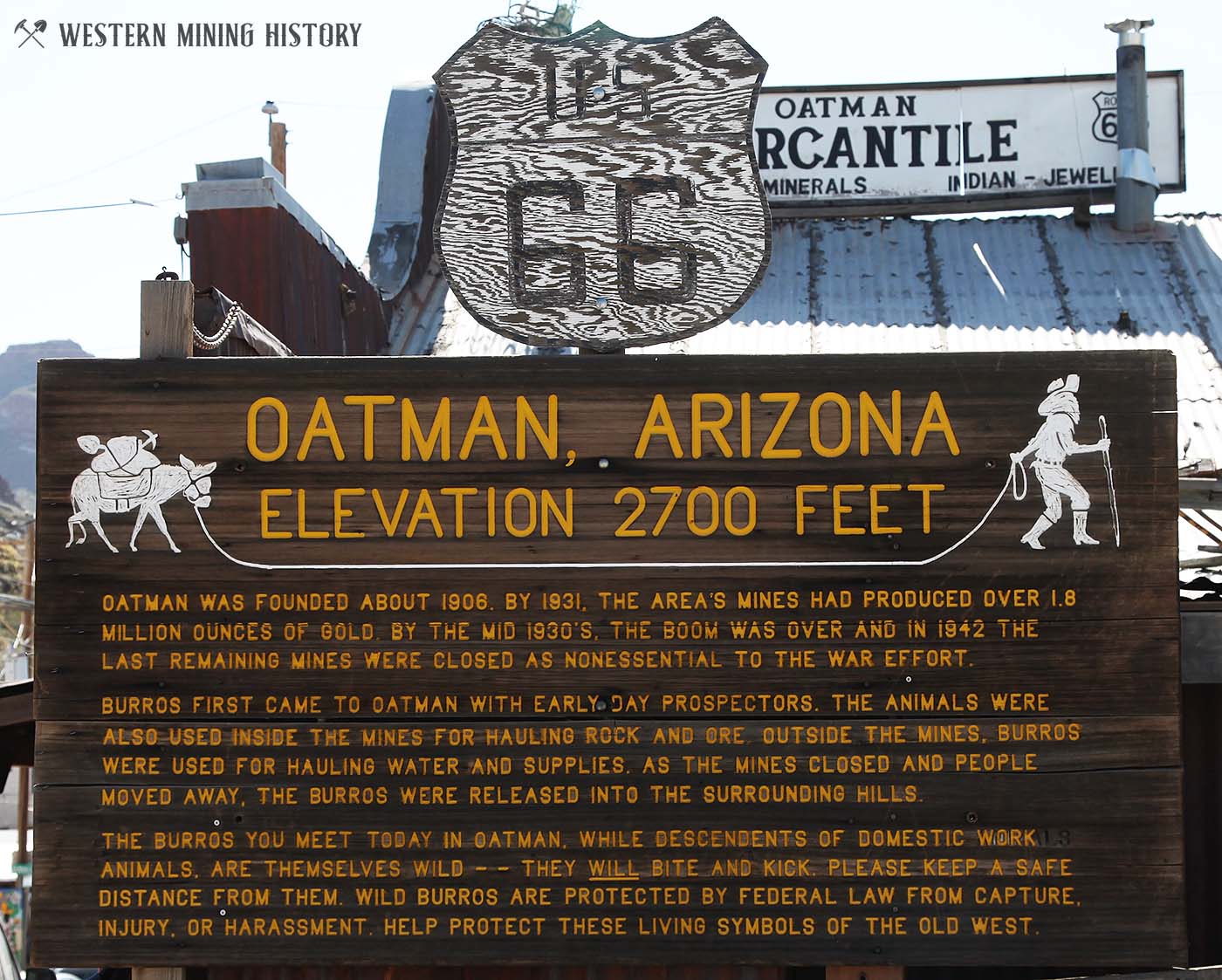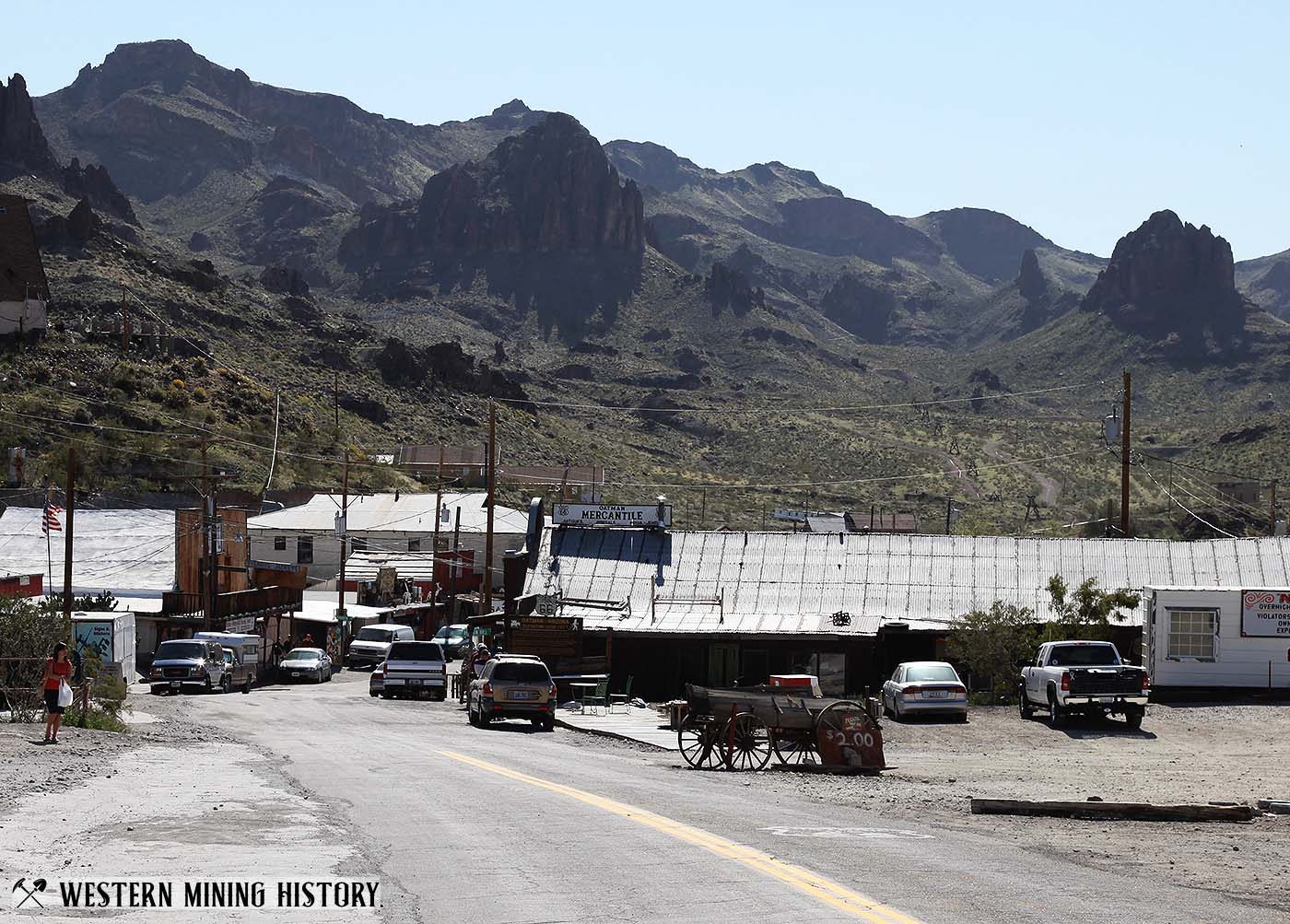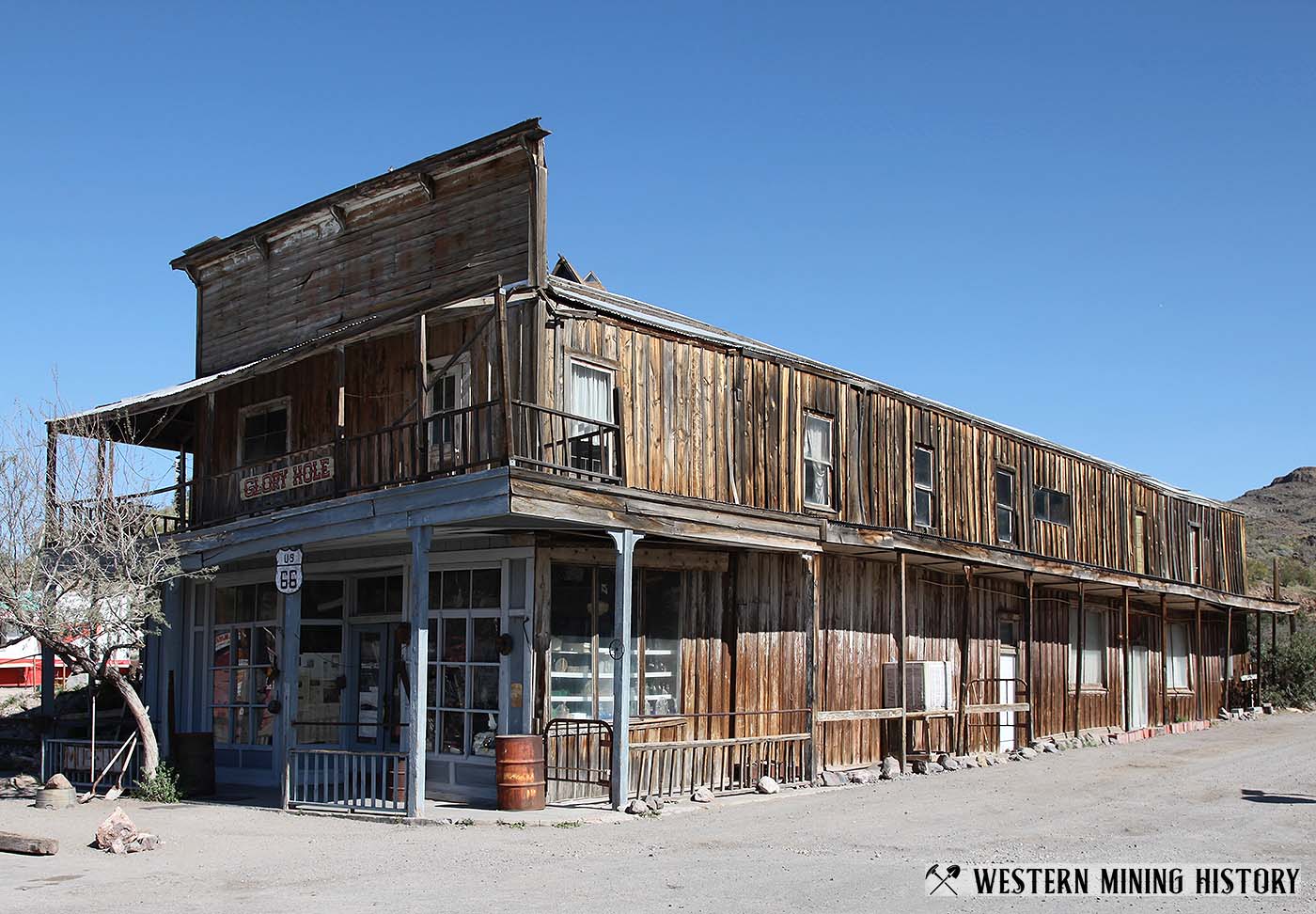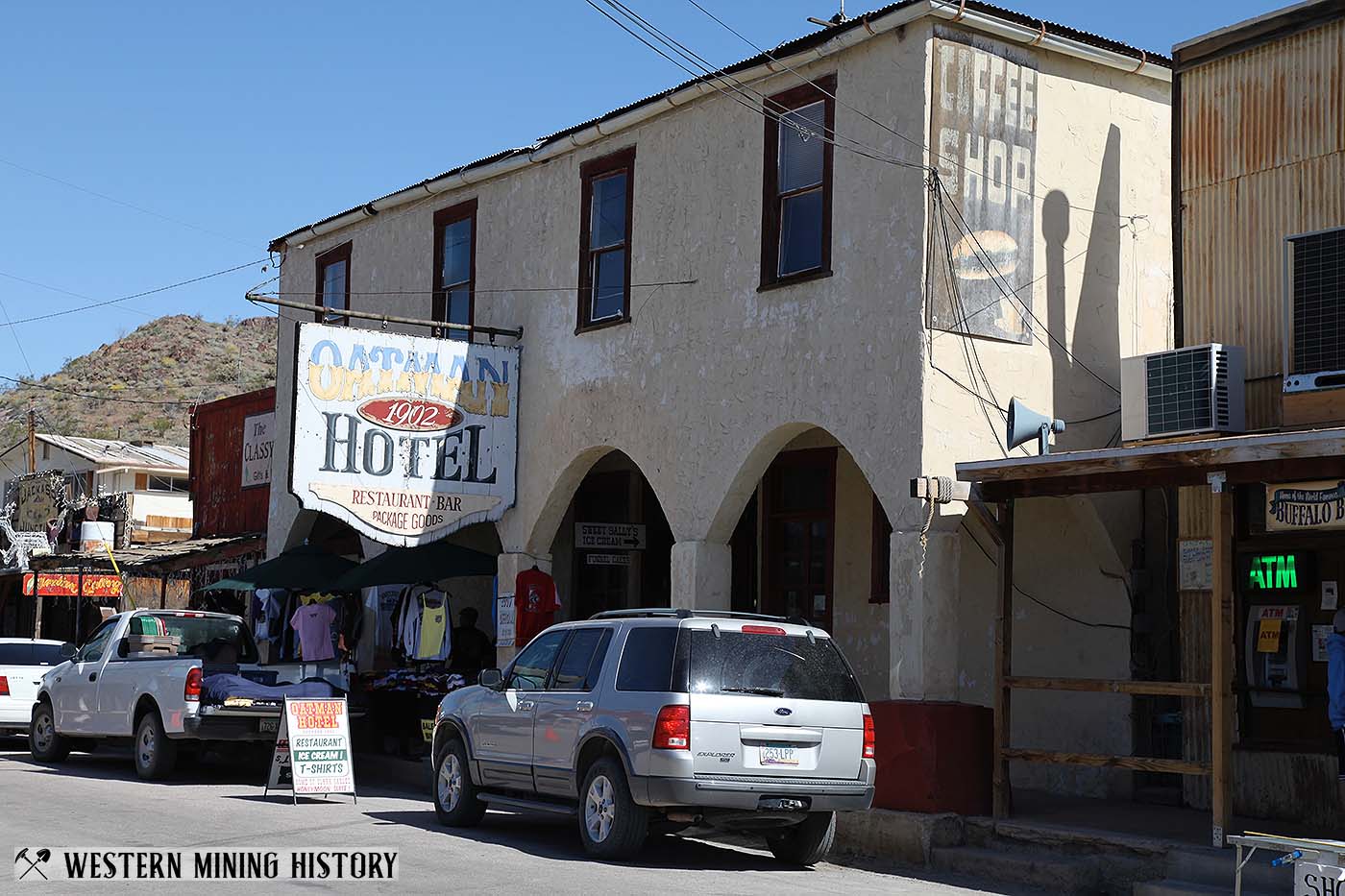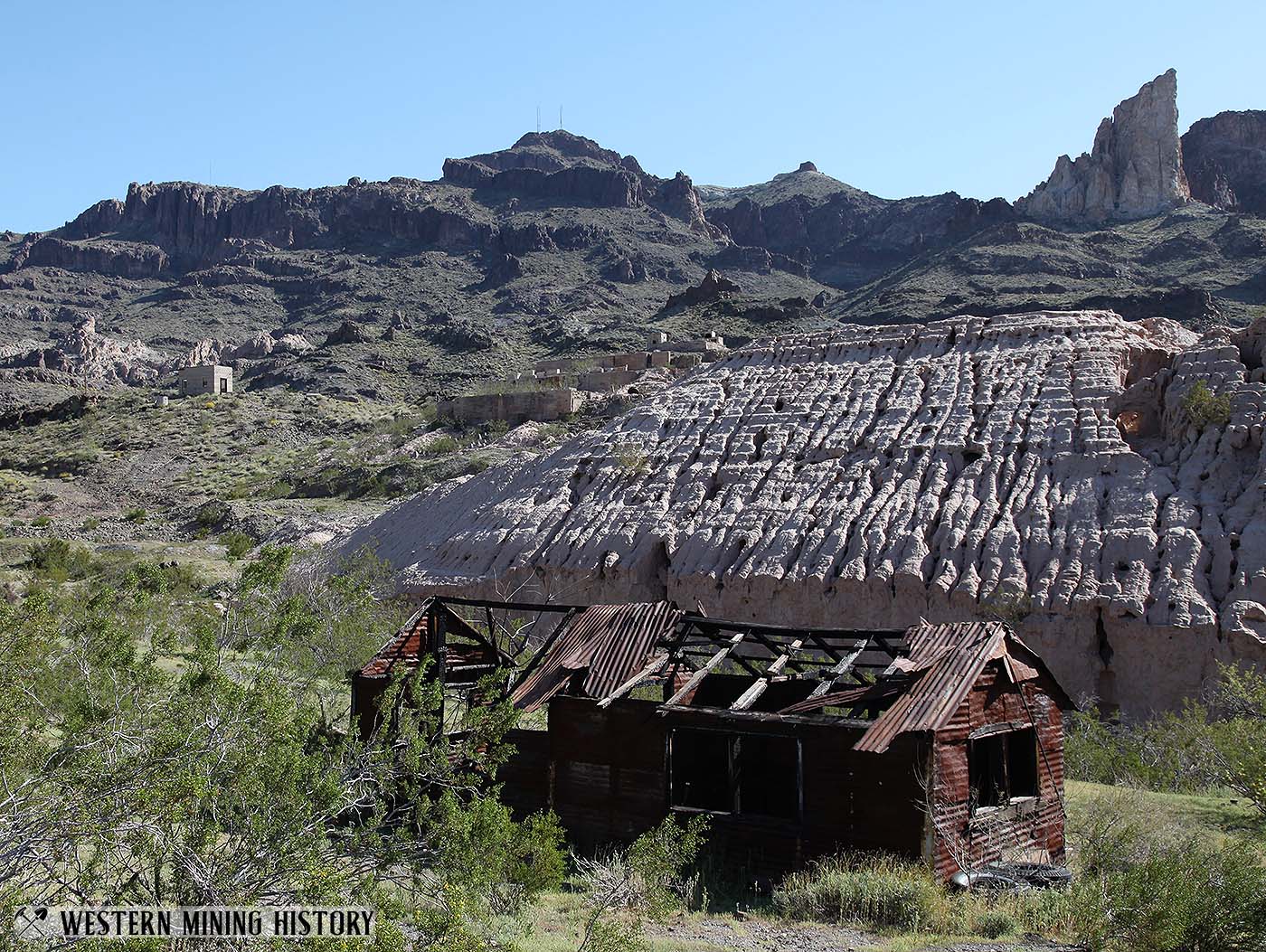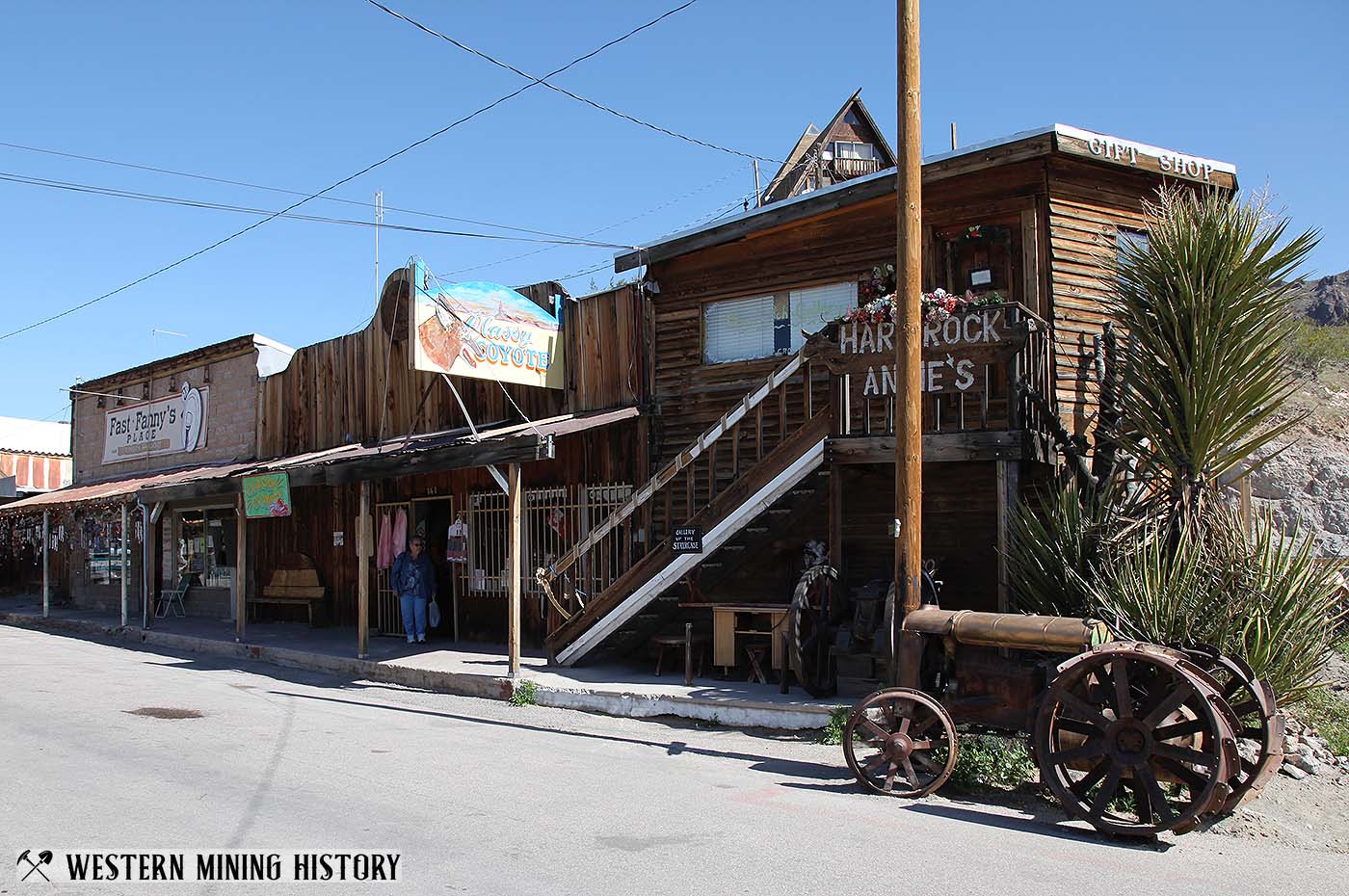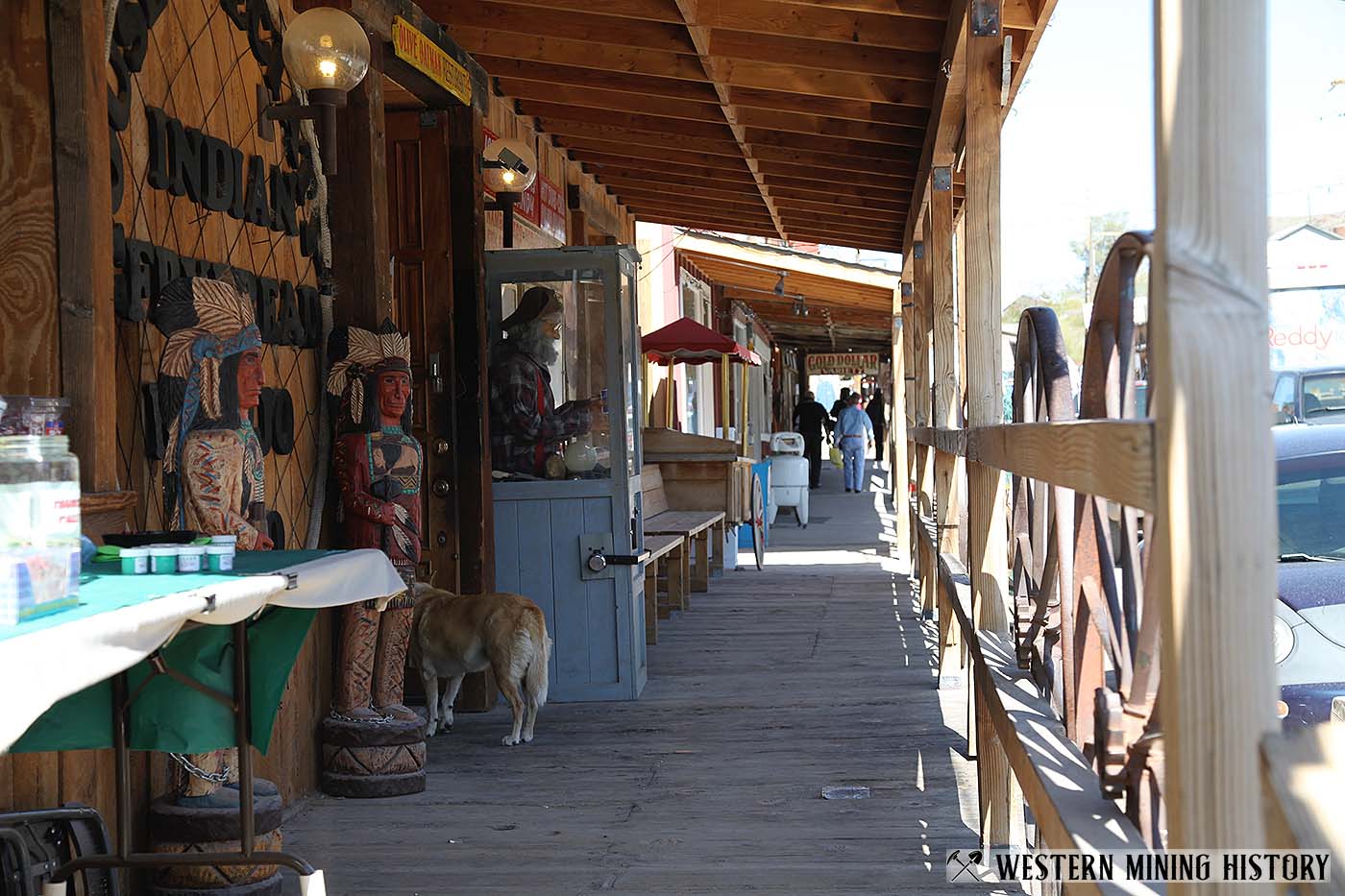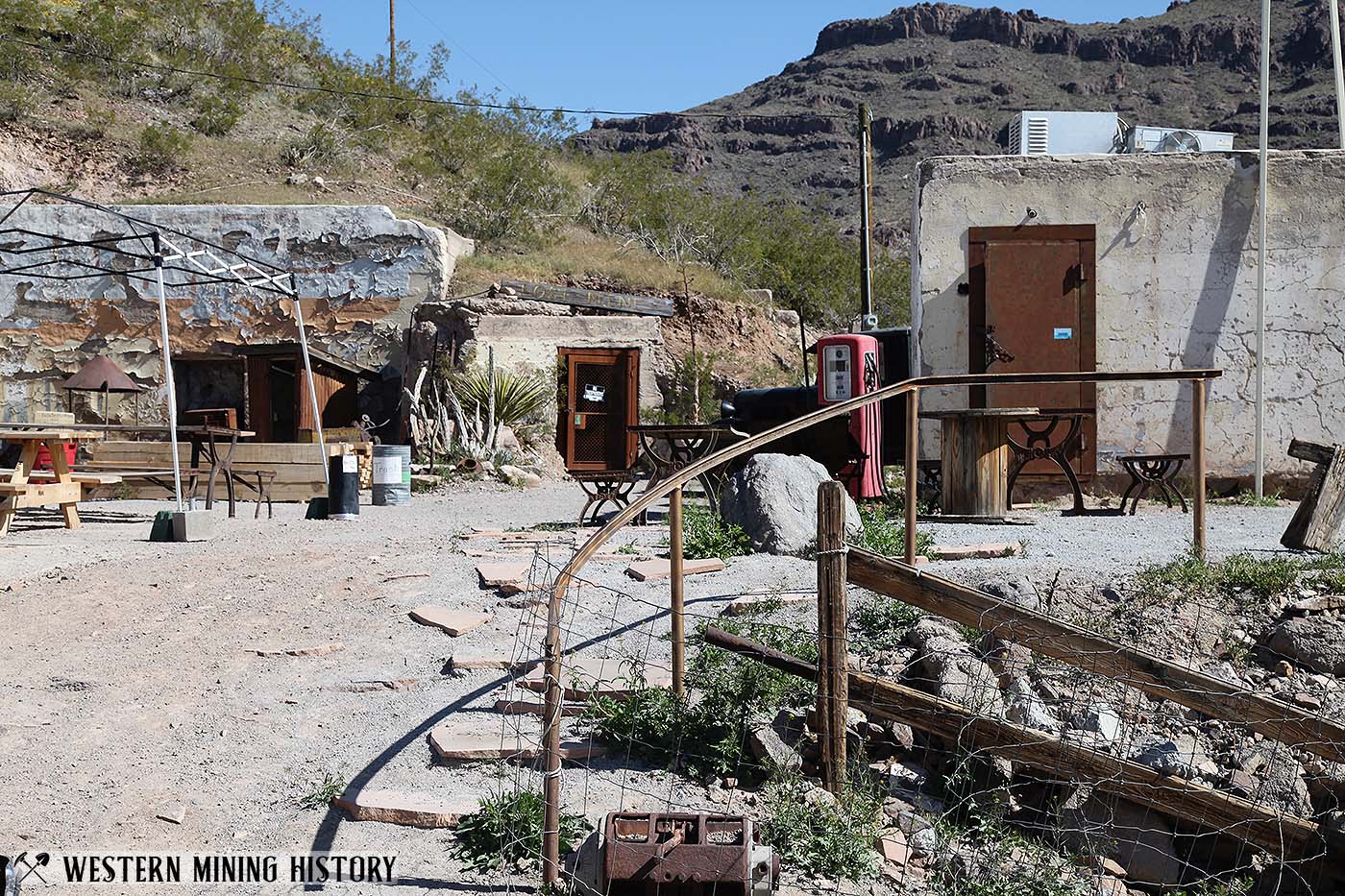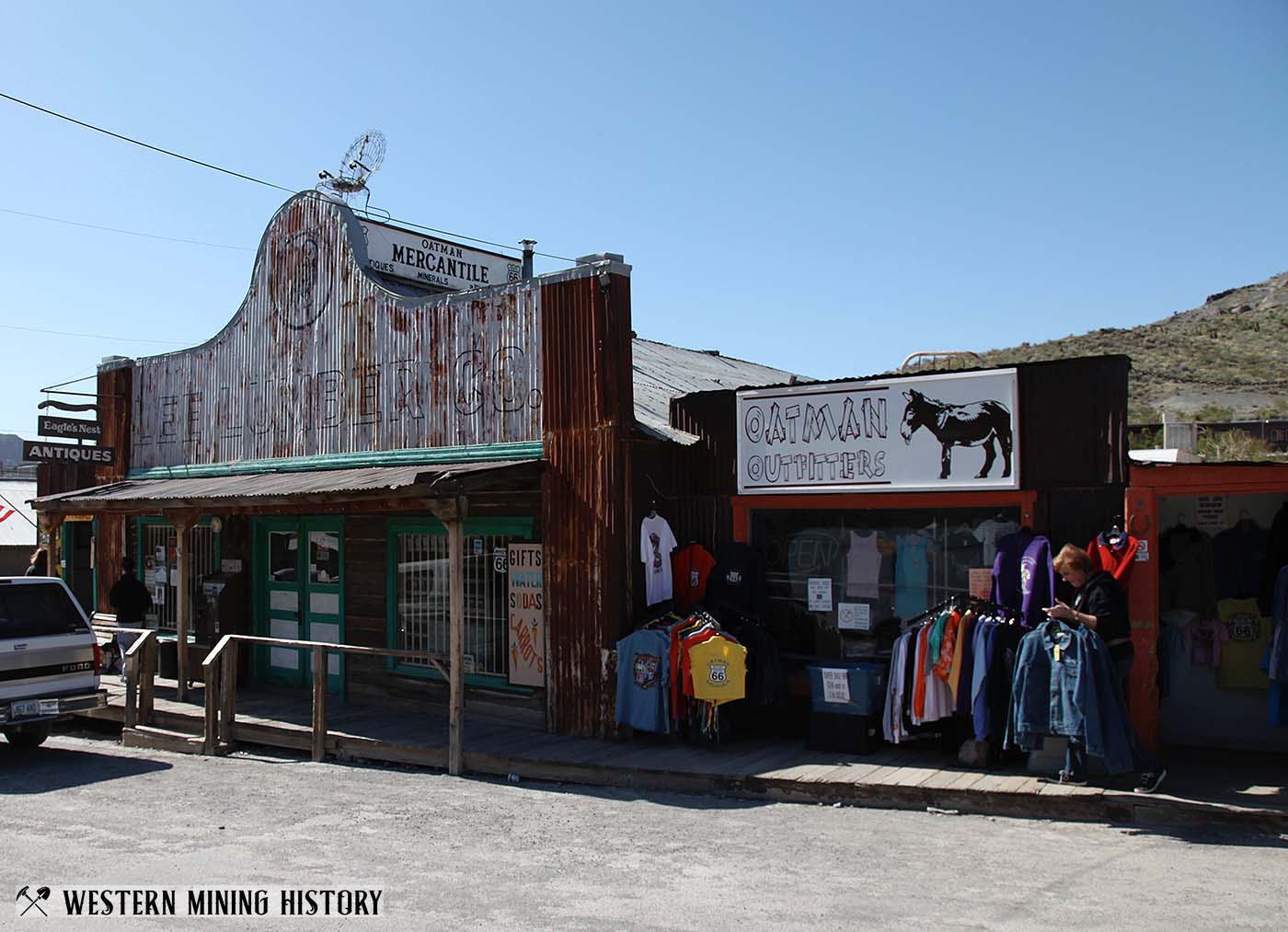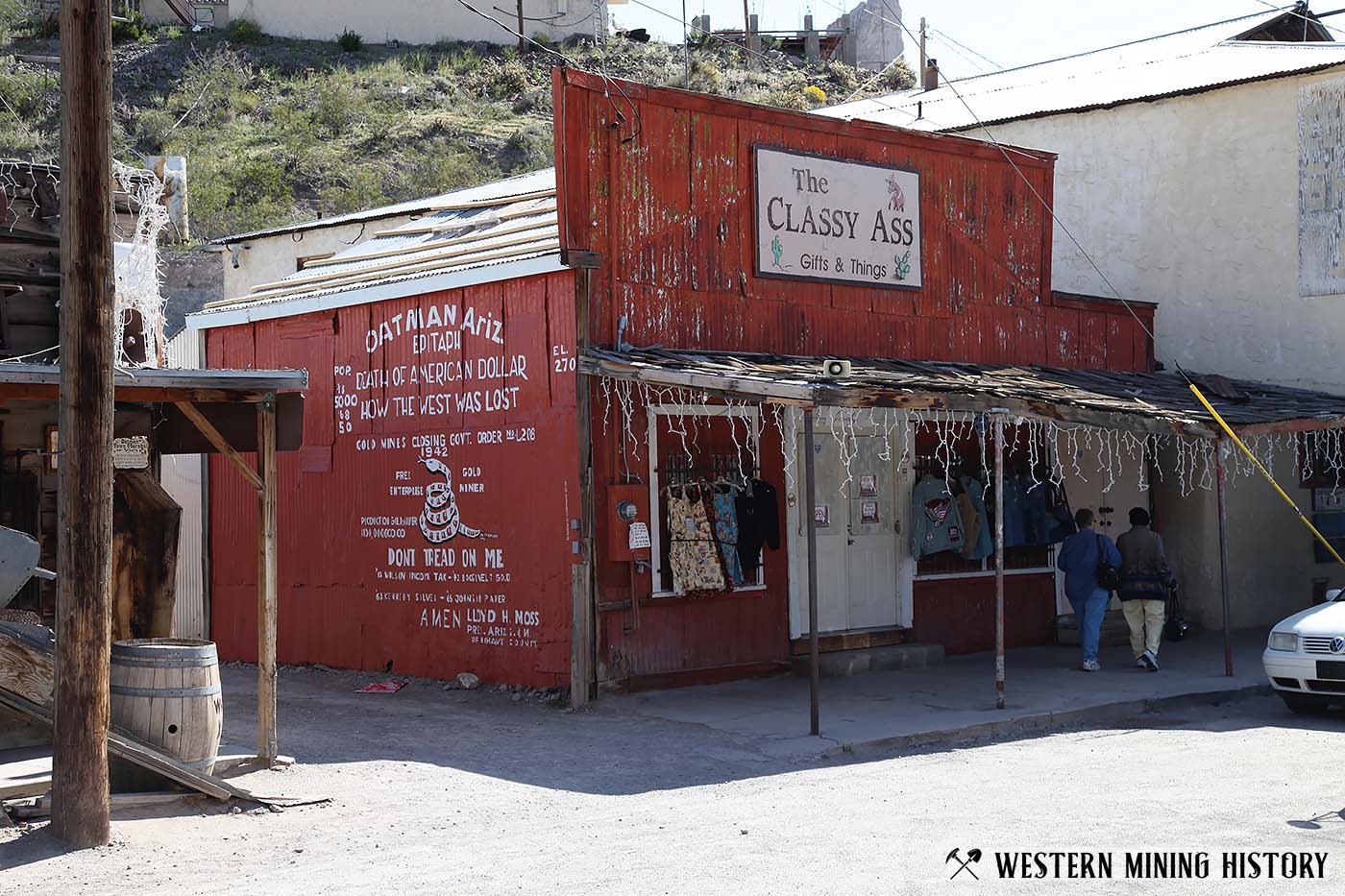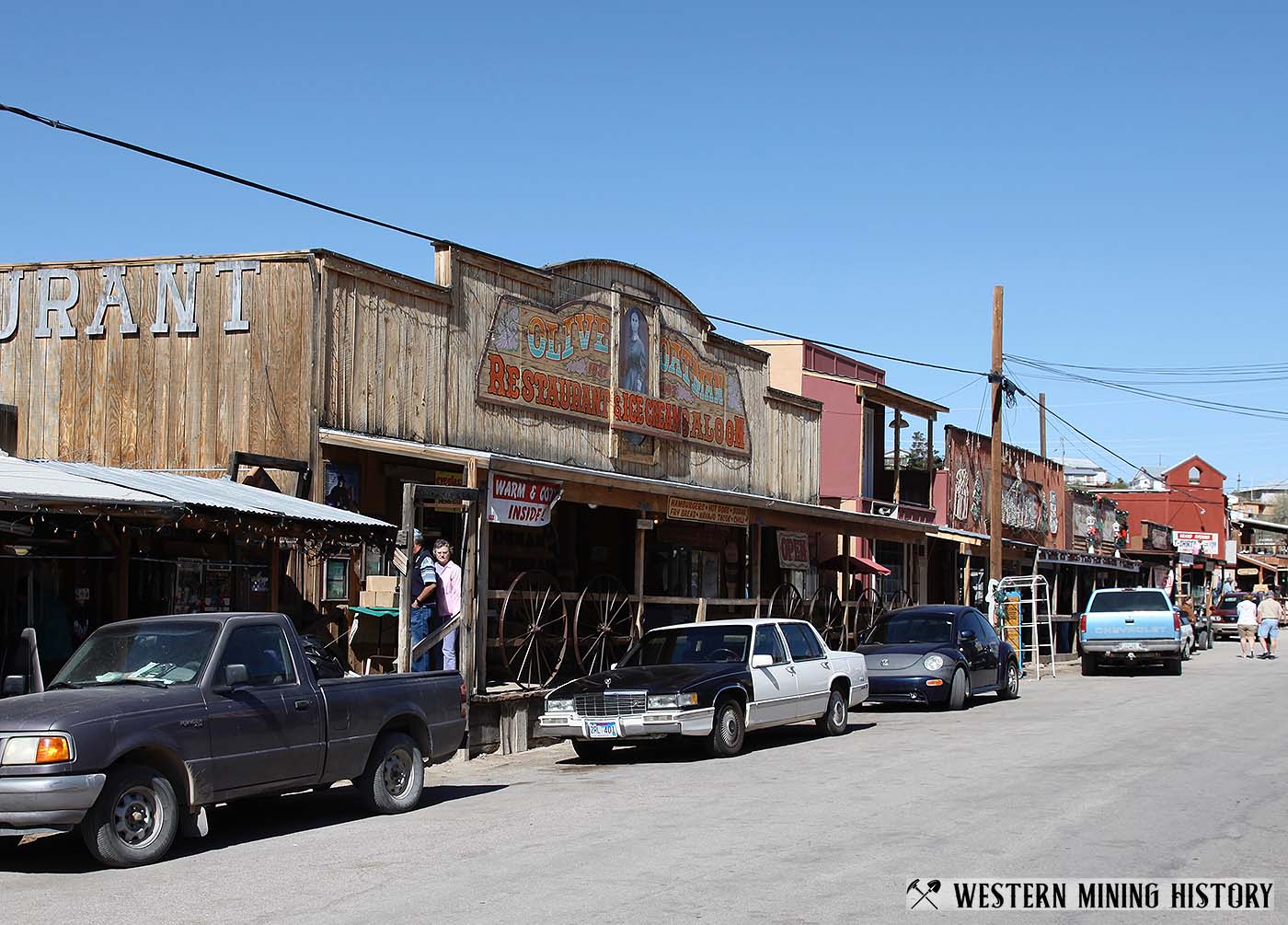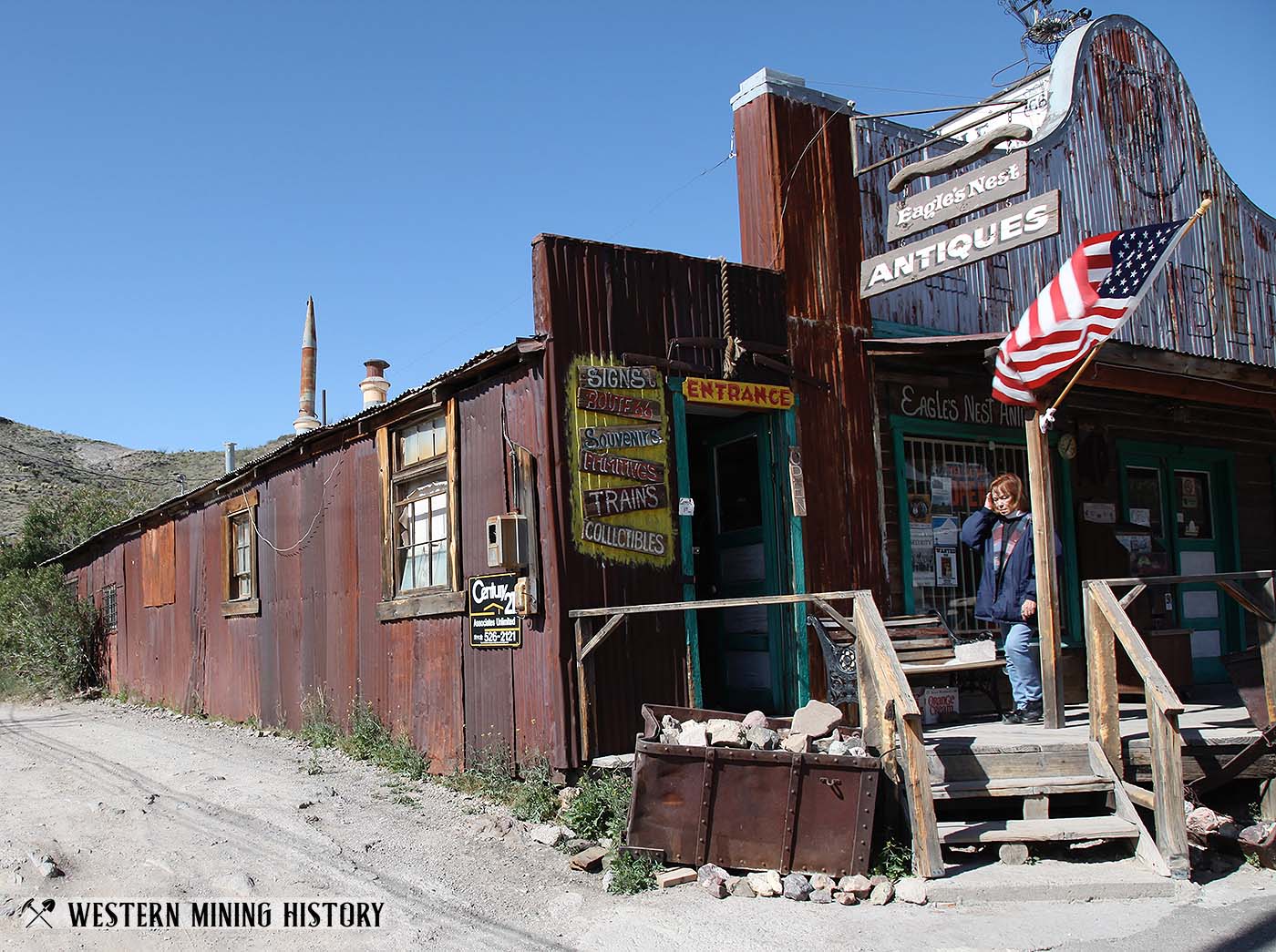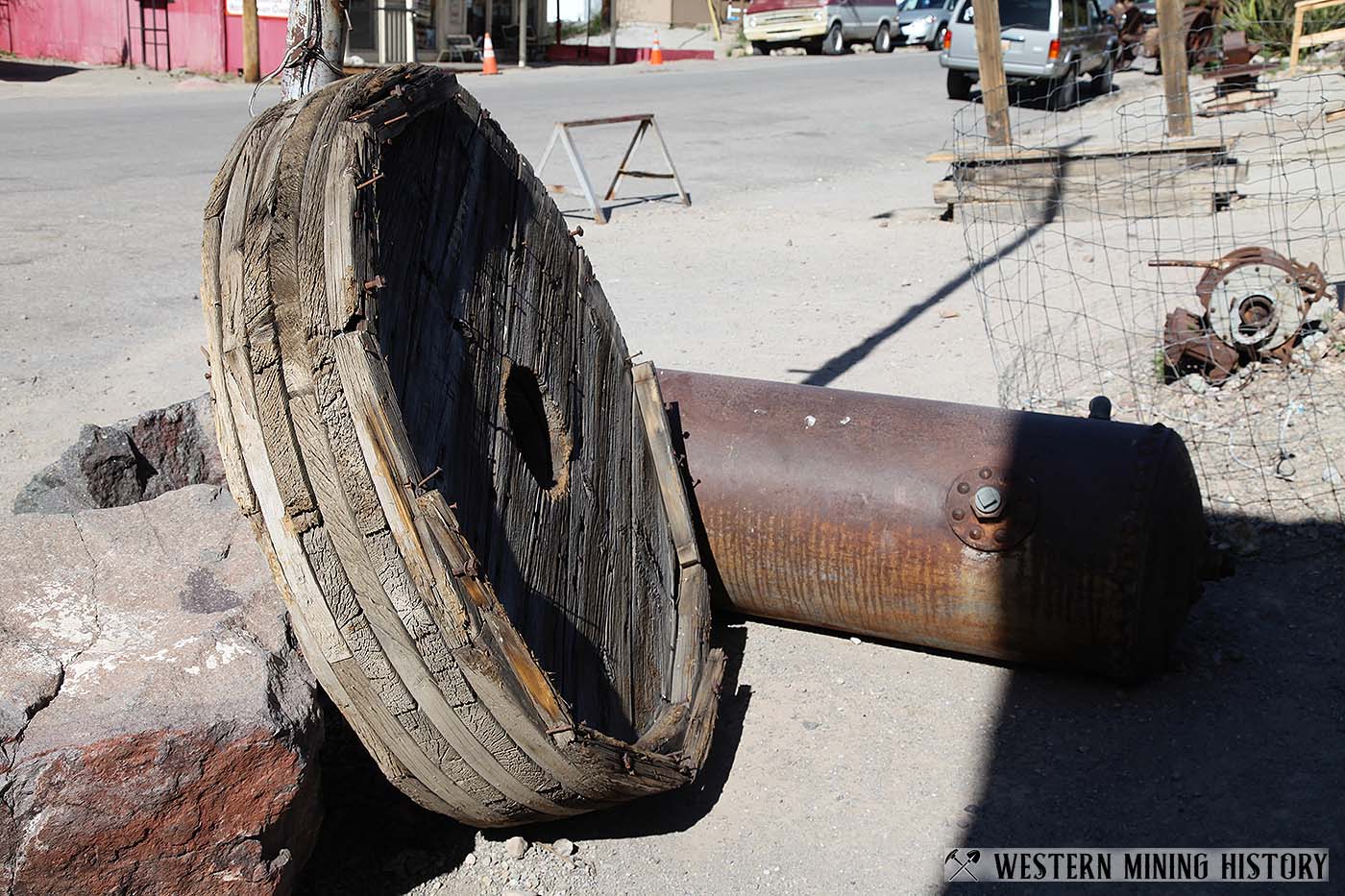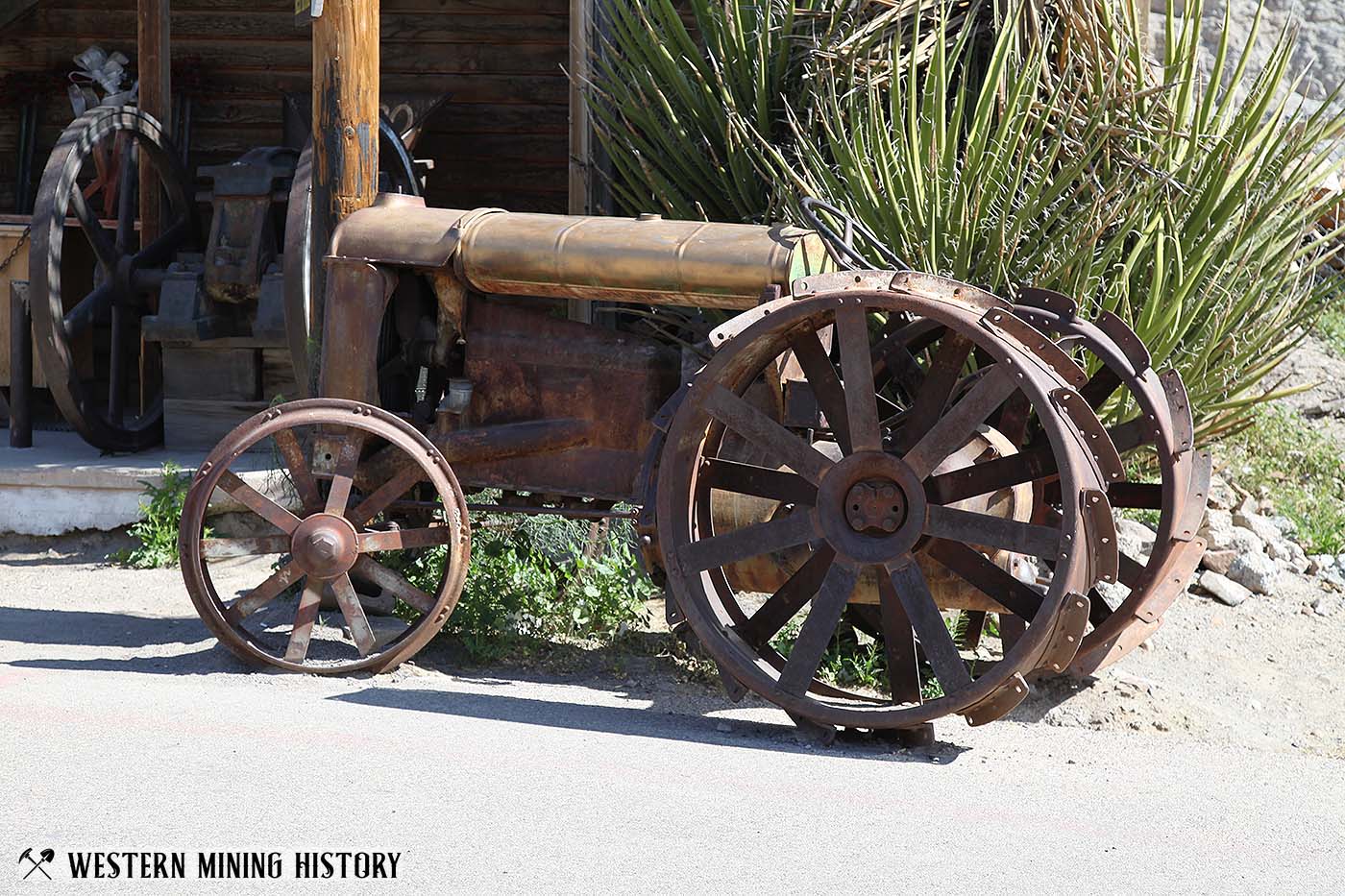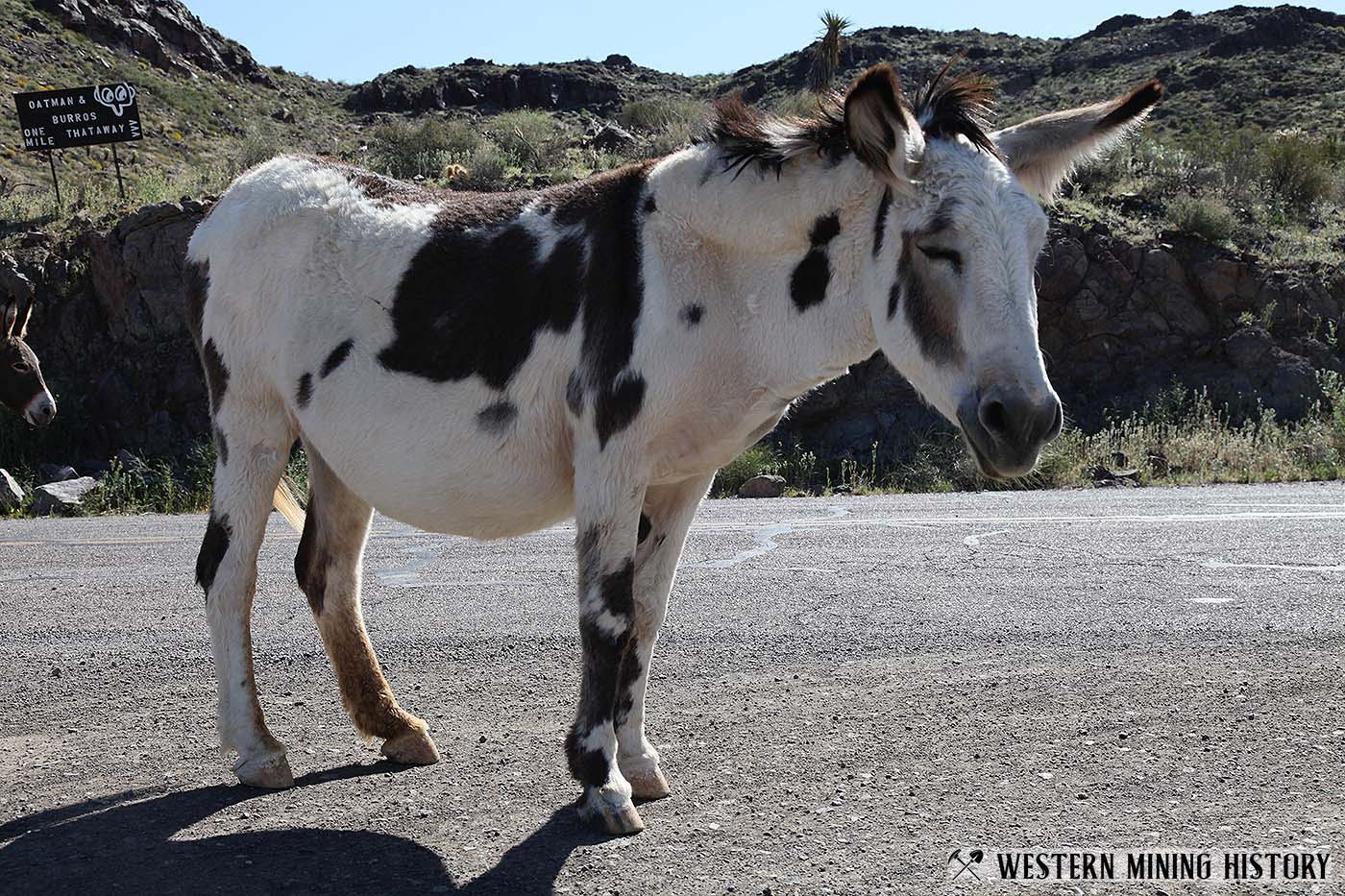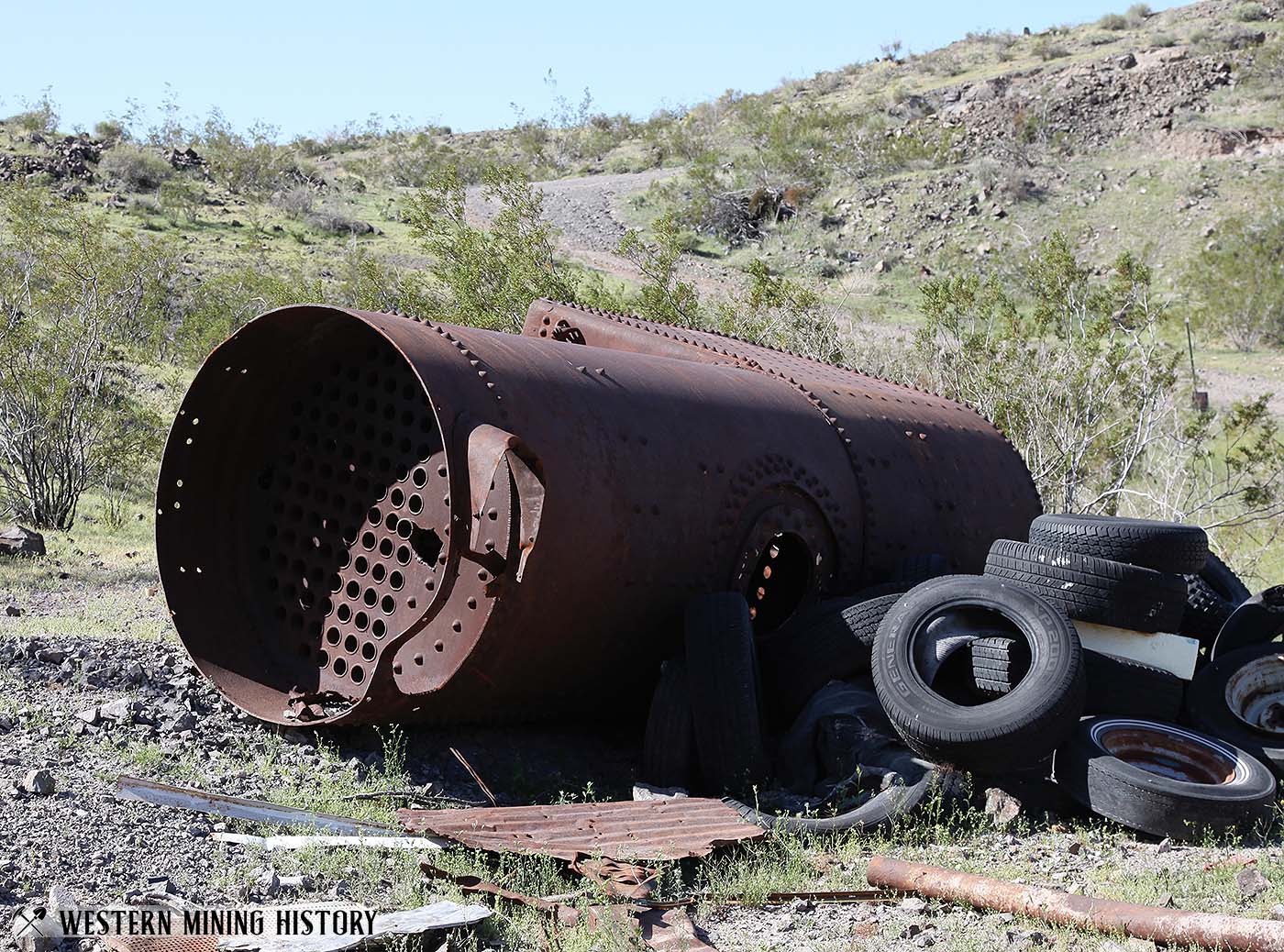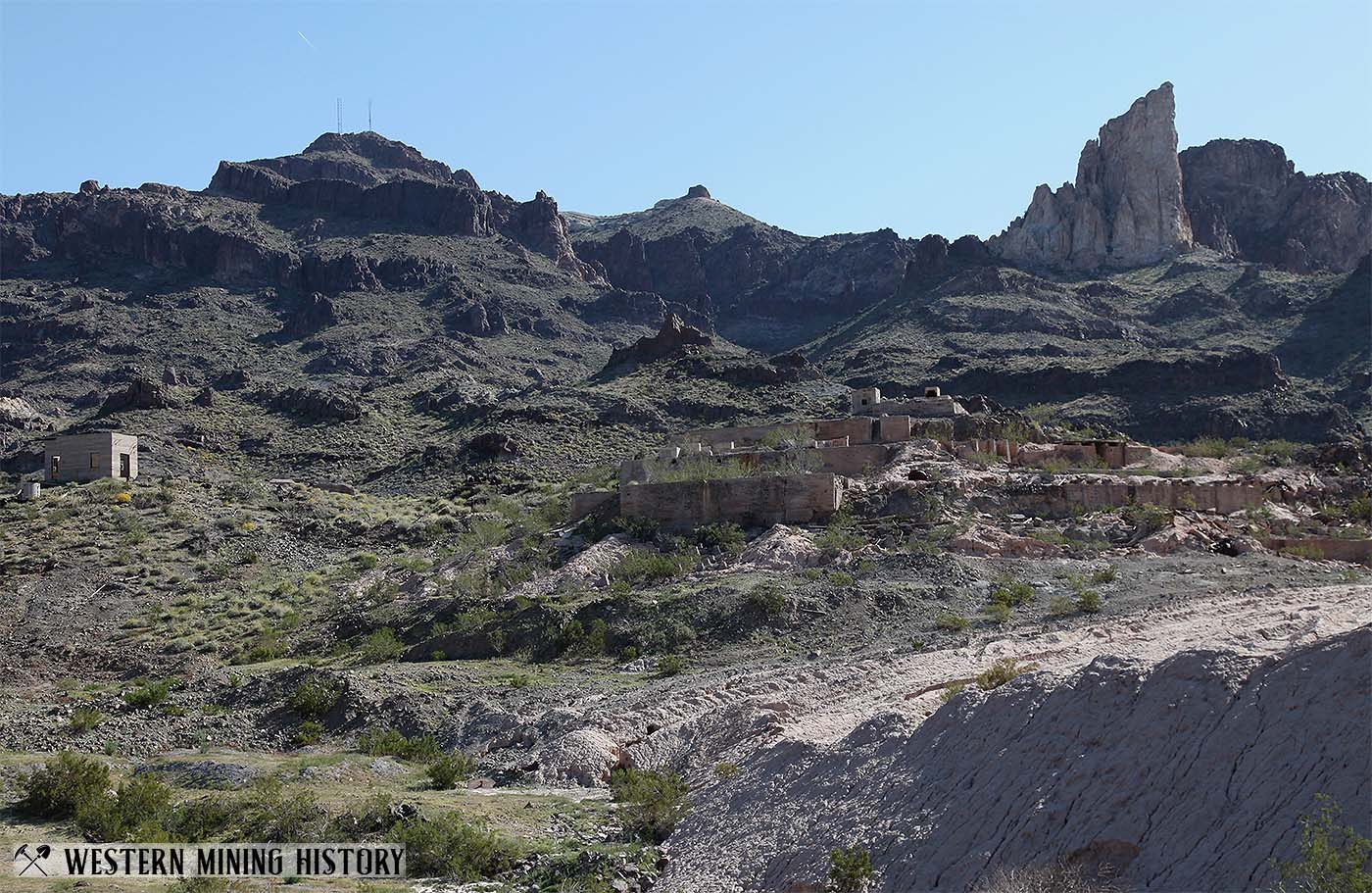Click on an image to get more details or a direct link.
Mines of the Oatman district 1921
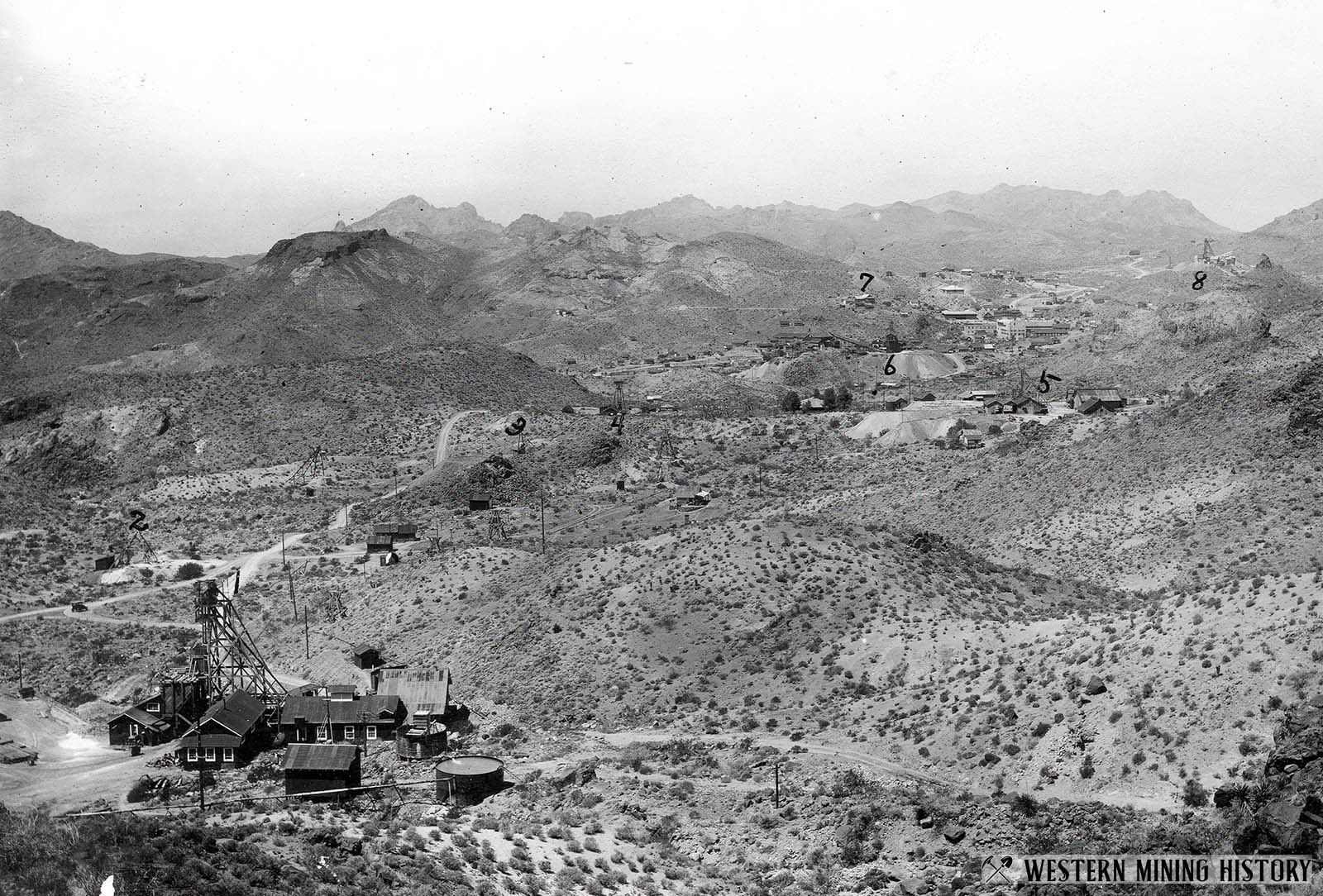
Mines of the Oatman district; northwest, toward Oatman, along the Tom Reed vein from the vicinity of the Aztec shaft, the following mines are identified going diagonally left to right, from the foreground to notch on the right skyline; Aztec shaft, Bald Eagle shaft, Grey Eagle shaft, Red Lion shaft, Big Jim shaft, Benjamin Harrison shaft, Olla Oatman shaft, United Eastern No. 1 shaft, and United Eastern No. 2 shaft (just below the notch).
Mines of the Oatman district 1921
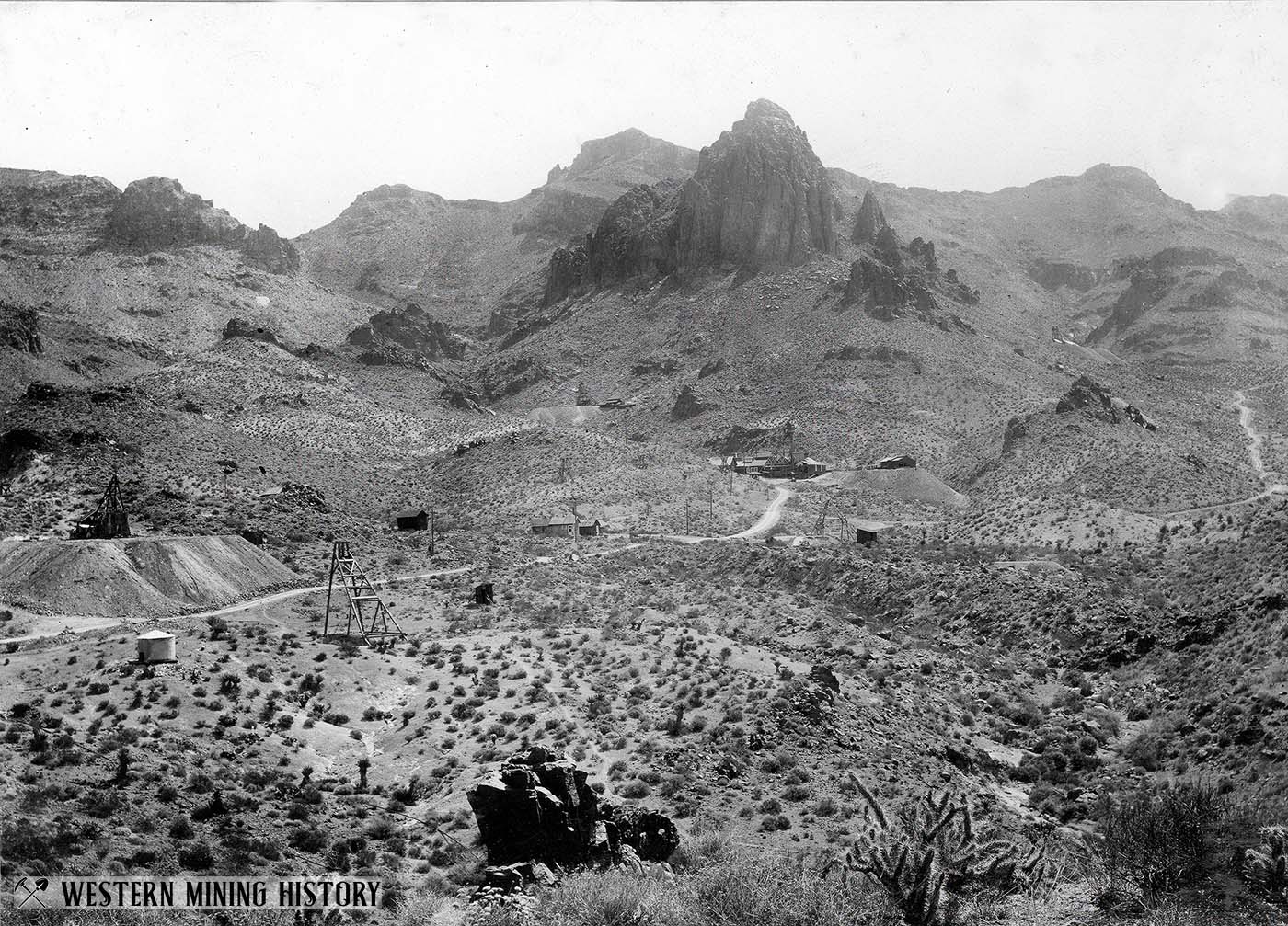
Mines of the Oatman district; southeast along the Tom Reed vein; the following mines are identified left to right up the valley at right; Grey Eagle shaft, Hooper shaft, on outcrop of the upper segment of the Tom Reed vein, Bald Eagle shaft, on same outcrop, Aztec shaft, Black Eagle dump, and American mine.
Vivian mine - Oatman, Arizona 1921
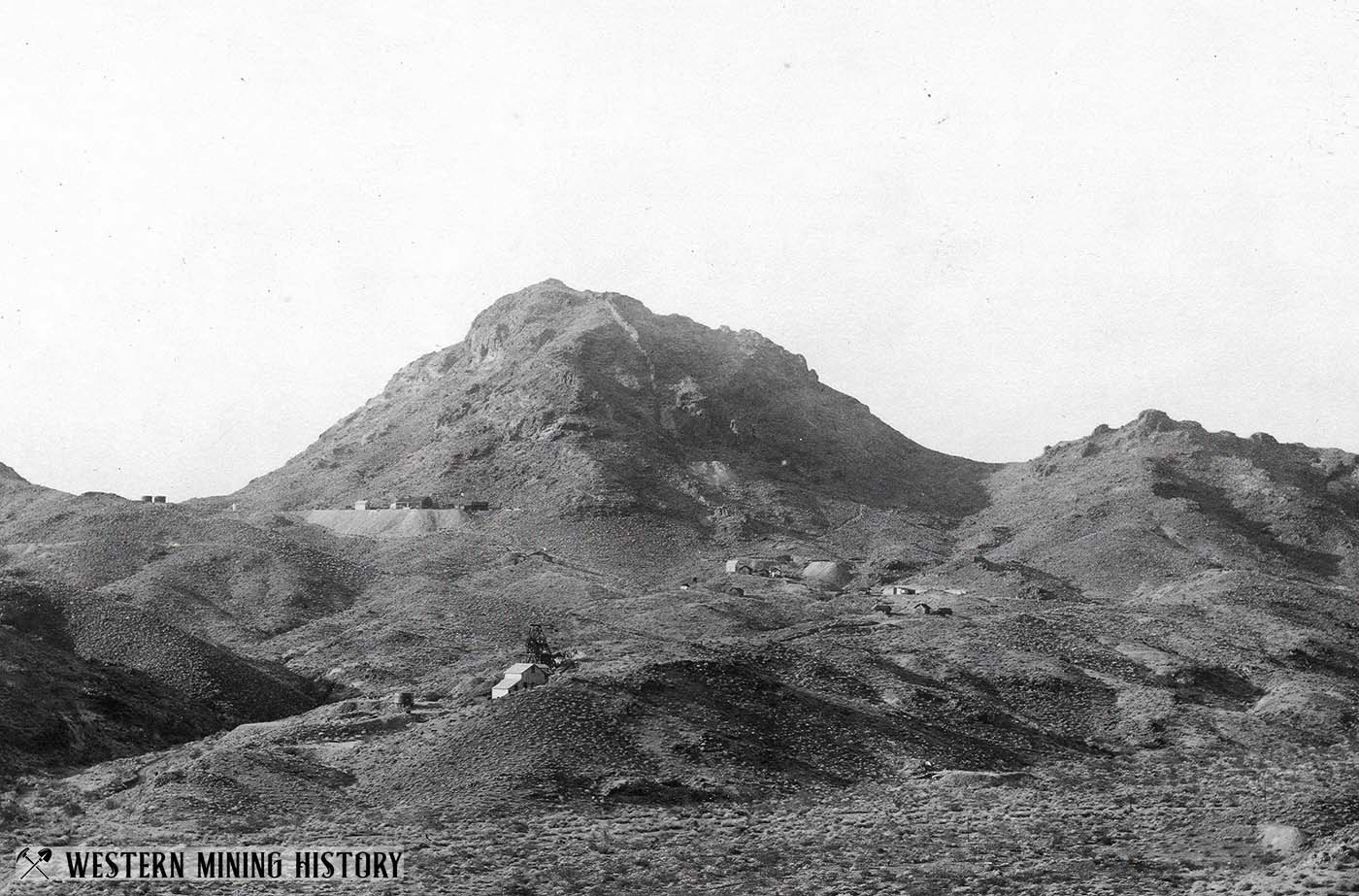
Shaft and mill low down in front of the hill are those of the Vivian mine.
Mines on Leland Hill 1921
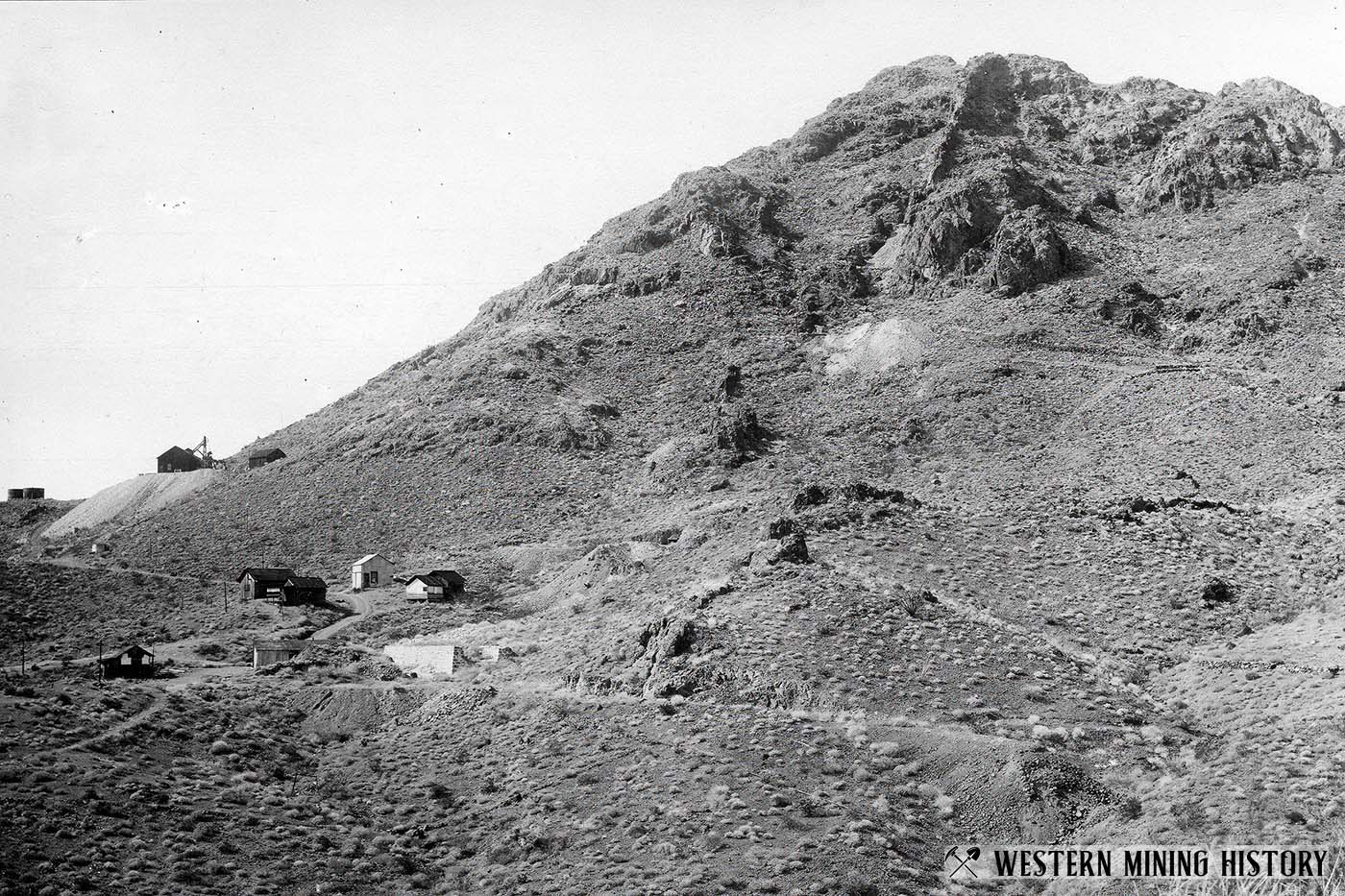
Mines of the Oatman district; Leland Hill from the southeast, looking along the vein; the following are identified in lazy clockwise circle starting about at the prominent outcrop in the center of the hill; No. 1 tunnel, No. 2 tunnel, No. 3 tunnel and on the ridge at left, Mitchell shaft.
Wild burros - Oatman
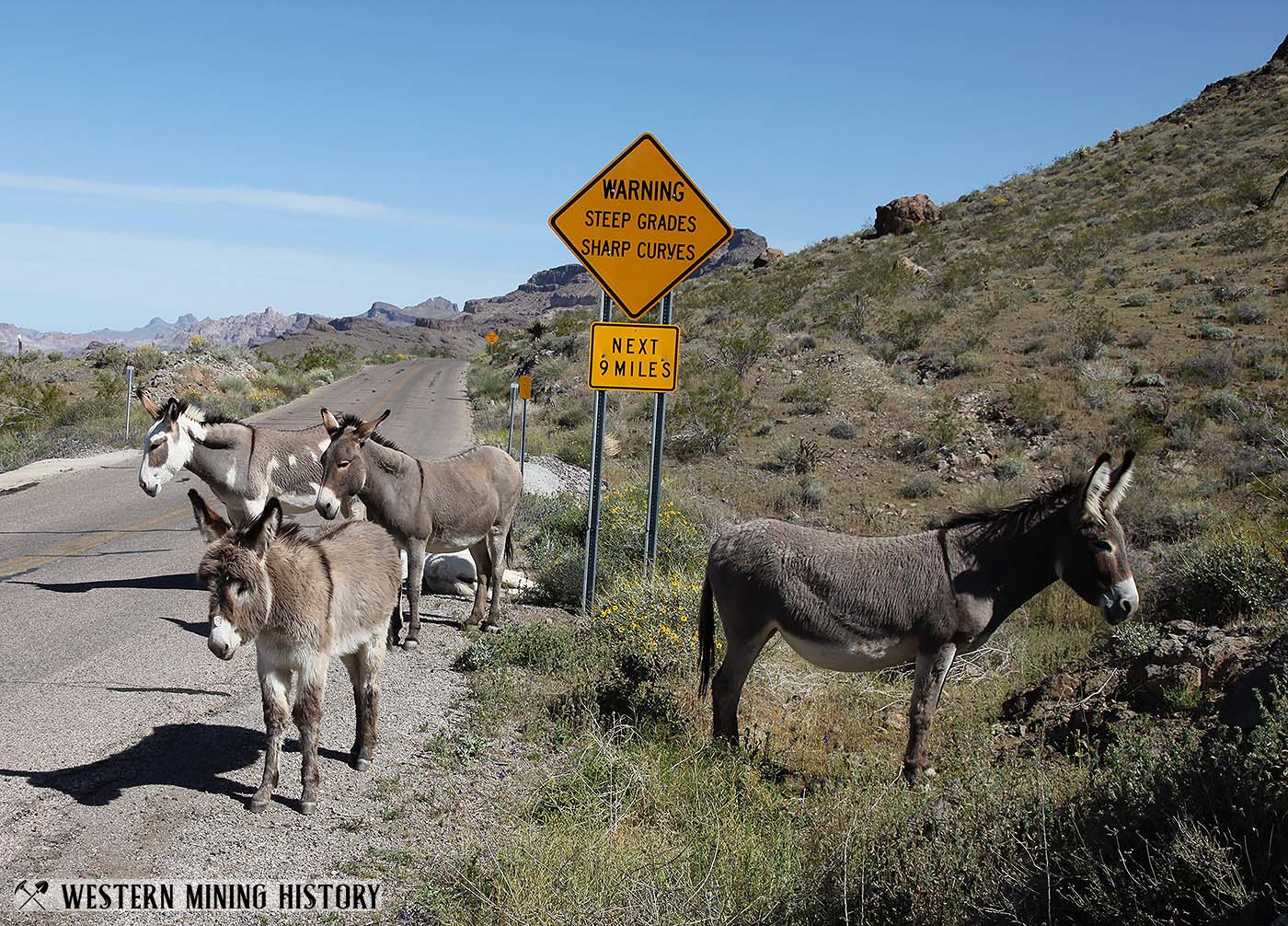
Burros first came to Oatman with early day prospectors. The animals were also used inside the mines for hauling rock and ore. Outside the mines, burros were used for hauling water and supplied. As the mines closed and people moved away, the burros were released into the surrounding hills.
The burros you meet today in Oatman, while descendants of domestic work animals, are themselves wild. They will bite and kick. Please keep a safe distance from them. Wild burros are protected by federal law from capture, injury, or harassment. Help protect these living symbols of the old west.
-Text from a sign in town
